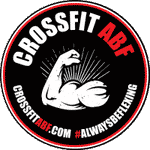An improper warm up greatly increases the risk of injury, especially in a sport with high physical demands. CrossFit combines Olympic weight lifting and gymnastics with heart-pounding cardio-intensive workouts. Sounds like a recipe for disaster, right? Well not so much if you have a good coach, use correct form, and properly warm up. The first two go hand-in-hand so let’s focus on fundamentals for the latter.
One of my favorite learning experiences (a.k.a. failures) in CrossFit was four years ago, when I was brand new to the sport, and thought I knew what I was doing. I was by myself in a work gym designed for meatheads. Being one of those meatheads, I decided that I was going to try CrossFit, and didn’t need to pay $100 a month just to work out. The workout that day had something to do with toes to bar and dead lifts. T2B meant I’ll be working my abs and some shoulders, and deadlifts were going to hit legs and a little lower back. No big deal, right? After a quick jog, some arm circles, and a few good mornings I thought, “I’m warm so let’s do this”!
The next day a sharp pain in my forearm decided to intermittently show up throughout the day. Being a meathead I really didn’t think anything of it until I got back in the gym at lunch and hopped up to do a couple “just for fun” toes to bar. I almost fell off the bar when my grip failed from pain shooting down my arm. Where in the heck did this come from? I didn’t do anything with forearms yesterday… the workout was abs, legs and back. I quickly realized my warm up the day before had nothing to do with grip strength and provided very little for shoulder mobility; doing high-intensity compound-movements would hit just about every muscle in the body and I’d neglected to properly prepare. As I learned throughout the remainder of the week not being able to hold a bar, barbell, dumbbell, or weight puts a huge hindrance on one’s ability to strength train. This experience changed my CrossFit game forever and it shows in my affiliate.
As a coach/owner my focus is on improving athletic performance while minimizing the risk of injury. A typical day’s programming at CrossFit ABF will have a scheduled Warm Up, Skill or Olympic Lift, and WOD or Work Out of the Day. When in actuality we will warm up for each of the components separately, putting way more focus on preparation than what’s advertised. We’ll spend 10-15 minutes on a dynamic warm up and a few minutes on a mobility specific for that day’s skill work. It is very important to note that the warm up and mobility elements performed prior to the workout are not meant to increase the athletes range of motion, but rather ensure the athlete achieving their current ROM. The athletes will then slowly add weight and methodically go through progressive movements until they reach the working weight for the skill. Once we finish the skill/oly session we start the warm up for the WOD from scratch.
Example: Let’s say we have a Rx athlete doing a few rounds of 100lb power snatches and pull ups. First, the athlete will work with an empty barbell (pvc pipe if necessary) and break down the power snatch into three to five basic movements – starting from the power position, progressing to the knee, and finally full light weight power snatch. Once they feel comfortable with a power snatch they’ll add 10lb plates for a warm up weight of 65lbs, and go through the movement progressions again. Between snatch sets the athlete may work in a few ring rows or pull ups to accommodate for the pull up portion of the WoD. They’ll generally rinse and repeat this process three or four times, going from 65lbs, to 85lbs, to 100lbs. Some clients are even encouraged to go 10% or 20% over the working weight to kind of trick the mind into thinking the weight for the WOD feels much lighter. This trick depends on the percentage of the working weight to the individual athletes one rep max and how proficient an athlete is in that particular movement.
This may seem like a tedious process to some but I find it’s better to be over prepared for a session than underprepared. Warm up properly, account for every muscle and joint that’s going to be worked, and if you’re not sure what do to, ASK! The longer you stay injury free the harder you can train.







